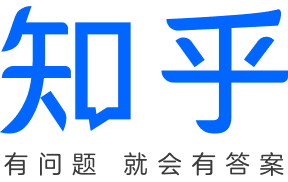3.11. Gen2 自动曝光roi
此示例说明如何在应用程序运行时根据边界框位置动态设置RGB相机的自动曝光 (AE)。
默认情况下,自动曝光区域根据神经网络输出进行调整。如果需要,可以手动设置区域。您可以通过按以下按钮之一来执行此操作:
w-向上移动 AE 区域
s-向下移动 AE 区域
a-向左移动 AE 区域
d-向右移动 AE 区域
n-停用手动区域(切换回基于nn的roi)
3.11.1. 演示
3.11.2. 设置
Warning
说明:此处安装的是第二代depthai库
请运行以下命令来安装所需的依赖项
python3 -m pip install --extra-index-url https://artifacts.luxonis.com/artifactory/luxonis-python-snapshot-local/ depthai==0.0.2.1+c9a19df719cb668e438d6eafd193cdf60a0d9354 numpy==1.19.5 opencv-python==4.5.1.48
有关更多信息,请参阅 Python API 安装指南
这个示例还需要 mobileenetsdd blob ( mobilenet.blob 文件 )才能工作——您可以从 这里 下载它。
3.11.3. 源代码
可以在 GitHub 上找到。国内用户也可以在 gitee 上找到。
#!/usr/bin/env python3
from pathlib import Path
import sys
import cv2
import depthai as dai
import numpy as np
# Press WASD to move a manual ROI window for auto-exposure control.
# Press N to go back to the region controlled by the NN detections.
# Get argument first
nnPath = str((Path(__file__).parent / Path('../models/mobilenet-ssd_openvino_2021.4_6shave.blob')).resolve().absolute())
if len(sys.argv) > 1:
nnPath = sys.argv[1]
if not Path(nnPath).exists():
import sys
raise FileNotFoundError(f'Required file/s not found, please run "{sys.executable} install_requirements.py"')
previewSize = (300, 300)
# Create pipeline
pipeline = dai.Pipeline()
# Define source and outputs
camRgb = pipeline.create(dai.node.ColorCamera)
camRgb.setPreviewSize(*previewSize)
camRgb.setInterleaved(False)
camControlIn = pipeline.create(dai.node.XLinkIn)
camControlIn.setStreamName('camControl')
camControlIn.out.link(camRgb.inputControl)
# Define a neural network that will make predictions based on the source frames
nn = pipeline.create(dai.node.MobileNetDetectionNetwork)
nn.setConfidenceThreshold(0.5)
nn.setBlobPath(nnPath)
nn.setNumInferenceThreads(2)
nn.input.setBlocking(False)
camRgb.preview.link(nn.input)
# Linking
xoutRgb = pipeline.create(dai.node.XLinkOut)
xoutRgb.setStreamName("rgb")
camRgb.preview.link(xoutRgb.input)
nnOut = pipeline.create(dai.node.XLinkOut)
nnOut.setStreamName("nn")
nn.out.link(nnOut.input)
# MobilenetSSD label texts
labelMap = ["background", "aeroplane", "bicycle", "bird", "boat", "bottle", "bus", "car", "cat", "chair", "cow",
"diningtable", "dog", "horse", "motorbike", "person", "pottedplant", "sheep", "sofa", "train", "tvmonitor"]
def clamp(num, v0, v1):
return max(v0, min(num, v1))
def asControl(roi):
camControl = dai.CameraControl()
camControl.setAutoExposureRegion(*roi)
return camControl
class AutoExposureRegion:
step = 10
position = (0, 0)
size = (100, 100)
resolution = camRgb.getResolutionSize()
maxDims = previewSize[0], previewSize[1]
def grow(self, x=0, y=0):
self.size = (
clamp(x + self.size[0], 1, self.maxDims[0]),
clamp(y + self.size[1], 1, self.maxDims[1])
)
def move(self, x=0, y=0):
self.position = (
clamp(x + self.position[0], 0, self.maxDims[0]),
clamp(y + self.position[1], 0, self.maxDims[1])
)
def endPosition(self):
return (
clamp(self.position[0] + self.size[0], 0, self.maxDims[0]),
clamp(self.position[1] + self.size[1], 0, self.maxDims[1]),
)
def toRoi(self):
roi = np.array([*self.position, *self.size])
# Convert to absolute camera coordinates
roi = roi * self.resolution[1] // 300
roi[0] += (self.resolution[0] - self.resolution[1]) // 2 # x offset for device crop
return roi
@staticmethod
def bboxToRoi(bbox):
startX, startY = bbox[:2]
width, height = bbox[2] - startX, bbox[3] - startY
roi = frameNorm(np.empty(camRgb.getResolutionSize()), (startX, startY, width, height))
return roi
# Connect to device and start pipeline
with dai.Device(pipeline) as device:
# Output queues will be used to get the rgb frames and nn data from the outputs defined above
qControl = device.getInputQueue(name="camControl")
qRgb = device.getOutputQueue(name="rgb", maxSize=4, blocking=False)
qDet = device.getOutputQueue(name="nn", maxSize=4, blocking=False)
frame = None
detections = []
nnRegion = True
region = AutoExposureRegion()
# nn data (bounding box locations) are in <0..1> range - they need to be normalized with frame width/height
def frameNorm(frame, bbox):
normVals = np.full(len(bbox), frame.shape[0])
normVals[::2] = frame.shape[1]
return (np.clip(np.array(bbox), 0, 1) * normVals).astype(int)
def displayFrame(name, frame):
for detection in detections:
bbox = frameNorm(frame, (detection.xmin, detection.ymin, detection.xmax, detection.ymax))
cv2.rectangle(frame, (bbox[0], bbox[1]), (bbox[2], bbox[3]), (255, 0, 0), 2)
cv2.putText(frame, labelMap[detection.label], (bbox[0] + 10, bbox[1] + 20), cv2.FONT_HERSHEY_TRIPLEX, 0.5, 255)
cv2.putText(frame, f"{int(detection.confidence * 100)}%", (bbox[0] + 10, bbox[1] + 40), cv2.FONT_HERSHEY_TRIPLEX, 0.5, 255)
if not nnRegion:
cv2.rectangle(frame, region.position, region.endPosition(), (0, 255, 0), 2)
cv2.imshow(name, frame)
while True:
# Instead of get (blocking), we use tryGet (nonblocking) which will return the available data or None otherwise
inRgb = qRgb.tryGet()
inDet = qDet.tryGet()
if inRgb is not None:
frame = inRgb.getCvFrame()
if inDet is not None:
detections = inDet.detections
if nnRegion and len(detections) > 0:
bbox = (detections[0].xmin, detections[0].ymin, detections[0].xmax, detections[0].ymax)
qControl.send(asControl(AutoExposureRegion.bboxToRoi(bbox)))
if frame is not None:
displayFrame("rgb", frame)
key = cv2.waitKey(1)
if key == ord('n'):
print("AE ROI controlled by NN")
nnRegion = True
elif key in [ord('w'), ord('a'), ord('s'), ord('d'), ord('+'), ord('-')]:
nnRegion = False
if key == ord('a'):
region.move(x=-region.step)
if key == ord('d'):
region.move(x=region.step)
if key == ord('w'):
region.move(y=-region.step)
if key == ord('s'):
region.move(y=region.step)
if key == ord('+'):
region.grow(x=10, y=10)
region.step = region.step + 1
if key == ord('-'):
region.grow(x=-10, y=-10)
region.step = max(region.step - 1, 1)
print(f"Setting static AE ROI: {region.toRoi()} (on frame: {[*region.position, *region.endPosition()]})")
qControl.send(asControl(region.toRoi()))
elif key == ord('q'):
break
有疑问?
我们很乐意为您提供代码或其他问题的帮助。
我们的联系方式
还可以通过我们发布的视频和文章了解OAK








